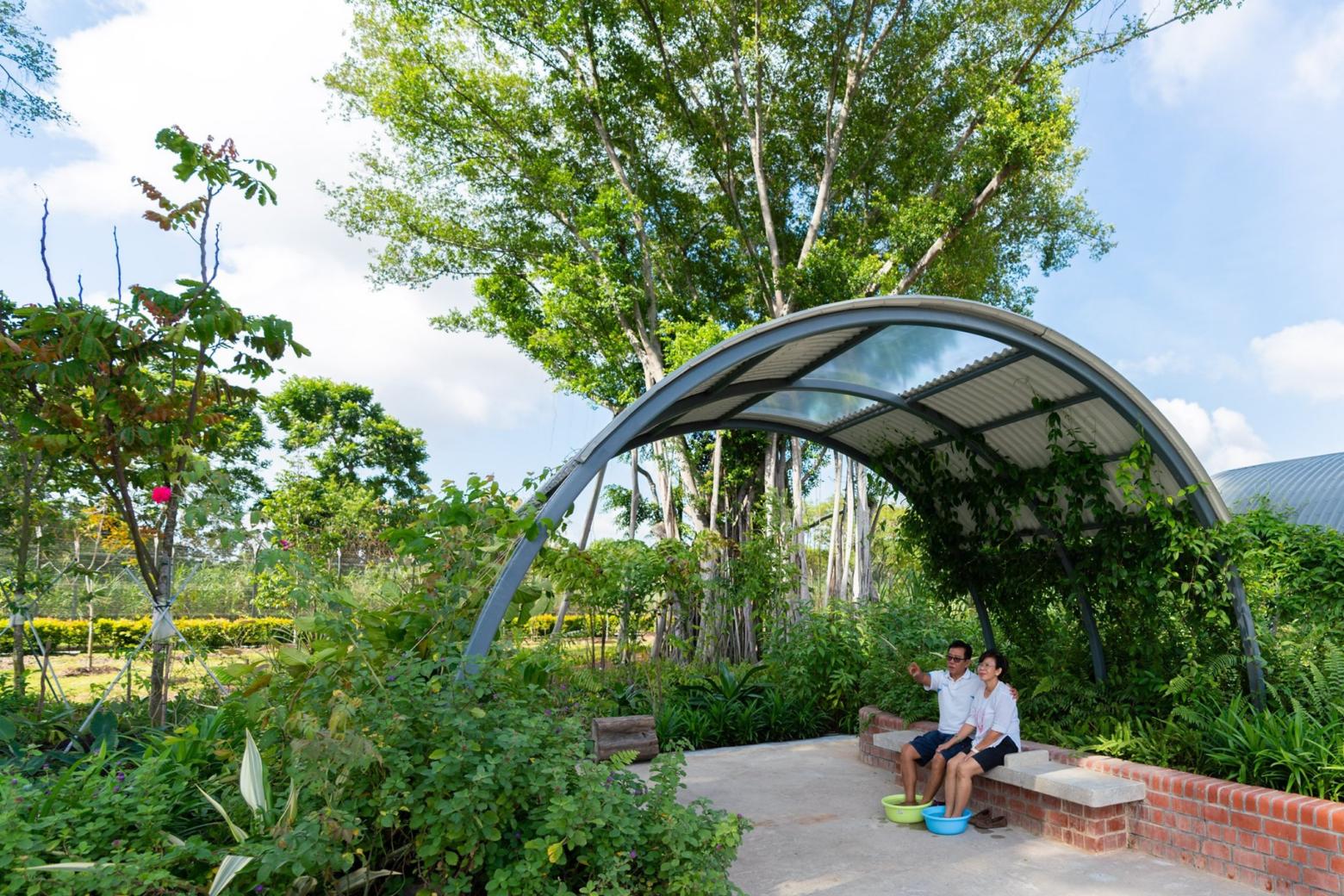Sembawang Hot Spring Park reopens with new cascading pool and enhanced accessibility for wheelchair users


Things are heating up in Sembawang once again, with the reopening of Singapore's only hot spring.
The Sembawang Hot Spring Park reopened on Saturday (Jan 4) after a $4.3 million redevelopment, expanding from its original 0.1 hectare to 1.1 hectare now.
The park, which was closed in Aug 2018 for the development works, now features a new cascading pool and a water collection point, with enhanced accessibility for wheelchair users.
There are also educational panels for visitors to learn more about the history and geology of the hot spring park, which is accessible along Gambas Avenue.
Ms Kartini Omar, group director of parks development at the National Parks Board (NParks), said that in designing the park, "NParks incorporated feedback and suggestions from the community from a public consultation in end-2017".
Among the suggestions were having a food and beverage outlet, an activity lawn and toilets, and ensuring the park remains "rustic and natural", said Ms Kartini.
At the launch, Sembawang GRC MPs Transport Minister Khaw Boon Wan, Education Minister Ong Ye Kung, Amrin Amin and Lim Wee Kiak, with Nee Soon GRC MPs Lee Bee Wah and Faishal Ibrahim, planted Island Lychee and Hairless Rambutan trees to mark the occasion in front of over 450 residents.
The new features of the park, such as the cascading pool at the heart of the park, aim to bring the geothermally heated groundwater closer to visitors.
The cascading pool sees the water cool naturally as it flows down four tiers of pools, with visitors able to dip in.
The park is also more inclusive, with wheelchair-friendly ramps and a specially designed tap at the main water collection point for the disabled.
The water collection point allows visitors of all ages to use pails and scoops to collect water readily. Visitors may also cook eggs at this station.

NParks said in a media release that plants have been planted in the park to recreate kampung life, including fruit trees and edible plants commonly found in kampungs, and flowers commonly seen in the 1960s and 1990s.
There are also unpaved paths and naturalised streams flowing from the hot spring, to mimic the freshwater swamp forest landscape.
Mr Rakunathan Narayanan, 60, who has lived in Yishun for over 30 years, is glad that the rustic nature of the location is being preserved.
“They should have done this long ago. You won’t find this anywhere else in Singapore,” said the security officer.

He has fond memories of cycling to the hot spring from about 30 years ago, when the area was still a kampung.
Jalan Mata Ayer resident Matthew Tan, 46, who works in the paint industry, said the different temperatures in each level of the cascade pool is a “cool concept”.
Mr Tan, who was at the park with his wife and two sons, added that he lives just a 10-minute walk away, and looks forward to patronising the cafe at the park often.
The hot spring was first discovered in 1908. During the Japanese Occupation from 1942 to 1944, the Japanese built thermal baths around the spring, and the site became recreational grounds for their officers.
In 1985, the Singapore government acquired the land for military use, with plans to expand Sembawang Air Base and cover the hot spring. Appeals by the local community saw the creation of a small concrete base with standpipes to channel the hot water in 2002.
The Sembawang Hot Spring Park is open from 7am to 7pm daily, and visitors can enter for free.
Mr Ong Ye Kung said he was grateful to the Ministry of Defence for carving out a part of Chong Pang Camp to be developed into a park, and thanked NParks for sharing and fulfiling the “unique” vision of having Singapore’s one and only hot spring park.
He added that the hot spring park is part of the wider development of Sembawang.
“There is a lot of development going on - a new MRT station, we are building Bukit Canberra community hub, we are seeing new BTO (build-to-order) projects, viaducts,” he said.
“What we want to ensure is as we develop, don’t forget to ‘sayang’ Sembawang. It is a place with history, with nature, with its own character. It’s through projects like this that we bring out the unique character of Sembawang.”
Dr Lim Wee Kiak, who had suggested in Parliament in 2016 that the area be developed into a national hot spring park, said he was “glad that the government took up the idea and developed it even better”.
He said some residents have shared with him about the hot spring water’s supposed medicinal properties, using the water when they have skin problems.
[embed]https://www.facebook.com/nparksbuzz/posts/2810758068963651?__tn__=-R[/embed]
This article was first published in The Straits Times. Permission required for reproduction.